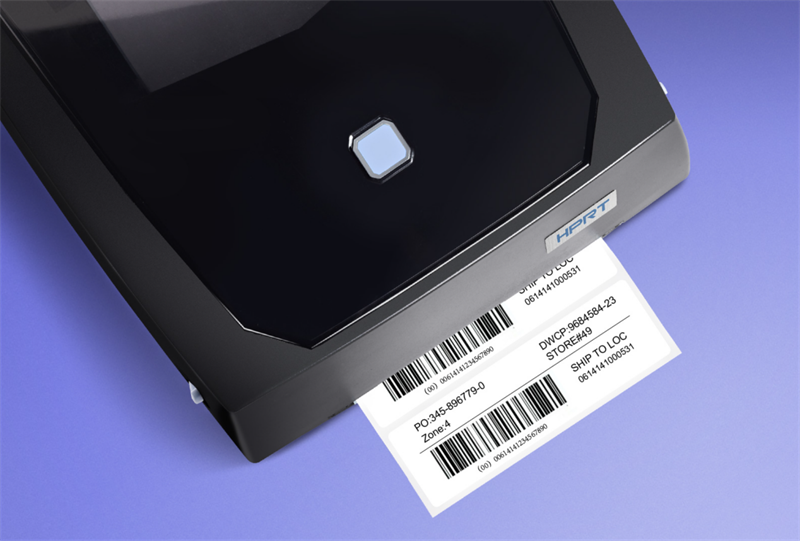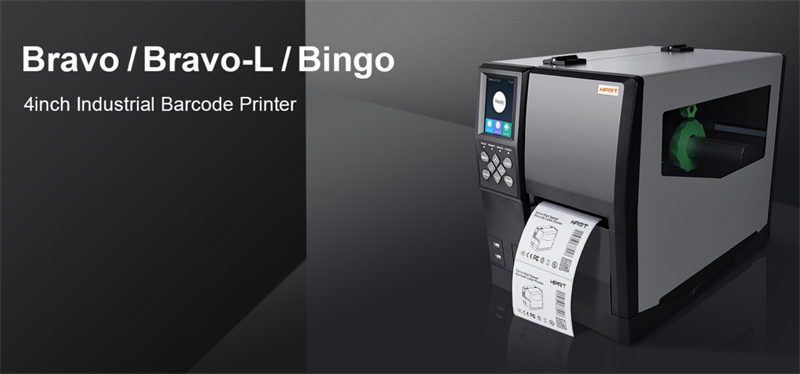How to Enhance Barcodes Printing Efficiency in Logistics and Warehousing
2023-11-28 16:50
Logistics and warehouse barcodes, as a key identification tool in various stages of the supply chain, are not just simple codes. They serve as a data bridge connecting manufacturers, distributors, logistics providers, and ultimately, the consumers. Throughout the circulation of goods, these barcodes carry information that supports the efficient operation of the entire supply chain.
This article will explore the types of barcodes used in warehouse logistics and how to optimize barcode printing effectively. This includes selecting the appropriate logistics barcode printer, choosing the right label materials, and carrying out printer calibration and maintenance.

Diverse Barcode Types in Logistics and Warehousing
Barcodes, including one-dimensional and two-dimensional codes, are commonly used information carriers in the storage and logistics industry. They identify a variety of content, but what specifically?
1.Encoding Product Information
Product identifiers and batch numbers are typically encoded directly in barcodes, commonly using the GS1-128 coding system. However, in industries like food and pharmaceuticals, GS1 DataBar or GS1-128 encode critical data such as production and expiry dates, enhancing product safety tracking.
Notably, the use of two-dimensional codes is increasing in the electronics and automotive industries due to their ability to contain more information, thus offering comprehensive product traceability and management features.
2.Item Identification in Storage and Transit
During storage and transportation, logistics units (such as pallets and boxes) are usually identified using ITF-14, GS1-128, or Code 39. ITF-14, in particular, is favored for larger units (like pallets or boxes), aiding in the seamless tracking of goods during transportation.
3.Streamlining Order Processing
Integrating customer purchase order codes with logistics data optimizes order processing and customer service, ensuring a seamless supply chain.
4.Tracking Location and Destination
Location codes are used to identify the specific location of products in a warehouse or their destination during transportation, helping to improve logistics efficiency and accuracy.
How to Optimize Barcode Printing?
To enhance barcode printing in warehousing and logistics, it’s essential to select the right coding system and improve print quality for optimal readability. Additionally, consideration should be given to the layout and size of the barcode to suit various packaging and storage conditions. Here are key steps to achieve this:
1.Choosing the Right Warehouse Barcode Printer
Firstly, choose the right type of printer based on the actual needs of barcode printing. HPRT offers a diverse range of thermal and thermal transfer catering to various warehouse printing requirements..
For high-volume environments like production lines, HPRT’s industrial barcode printers are ideal.

For on-the-go printing needs, such as pallet barcodes and shipping labels, the portable HPRT 3-inch portable barcode printer T3 PRO is highly efficient.

The choice of resolution directly affects the clarity and quality of barcode printing, and consequently, the reading effect of the barcode scanner. HPRT barcode printers offer multiple resolution options, including 203dpi, 300dpi, and 600dpi, and support various density settings, producing barcodes with clear and neat edges.
HPRT printers cover printing widths from 2 inches to 4 inches. For wider storage label printing or other special requirements, HPRT also provides OEM/ODM customization services.
These barcode label printers support various warehouse logistics barcode coding systems, such as GS1 128, GS1 DataBar, etc., and are used in conjunction with the powerful Bartender barcode editing software. This software supports multiple languages, making barcode label editing and design intuitive and convenient. More importantly, these printers can be effectively integrated with ERP, SAP, and other management systems, making data retrieval more efficient and significantly reducing the workload.

2.Selecting Appropriate Label Material
The choice of logistics and warehouse barcode label material is crucial. For long-lasting product labels, materials like synthetic paper, PP, PET are recommended, especially with HPRT thermal transfer warehouse label printers.

For single-use logistics barcodes, thermal label paper is sufficient. However, considering that ordinary thermal paper is prone to wear and abrasion, it is advisable to choose high-quality thermal paper, such as the popular three-proof or four-proof thermal papers on the market.
3.Regular Calibration and Maintenance
Experienced users understand that regular maintenance, especially cleaning the print head, can prevent ink accumulation and paper clog, ensuring clear barcode lines without breaks, and avoiding reading errors during scanning.
Additionally, it’s crucial to conduct regular checks and replacements of printer consumables, ensure the printer software is consistently updated to the latest version, and maintain compatibility with the most recent barcode standards and printing technologies. These practices are essential for keeping the printer in optimal working condition, which in turn leads to efficient and high-quality barcode printing output.
In the digital age, the role of warehouse logistics barcodes is increasingly prominent. Optimizing barcode printing not only improves the efficiency of the supply chain but also brings greater competitive advantages to businesses. We must remember, a clear and accurate barcode is the start of efficient logistics.
If you’re in search of the ideal logistics barcode printing solution, feel free to contact us. HPRT is here to offer you a professional, customized warehouse printing solution tailored to your needs.







